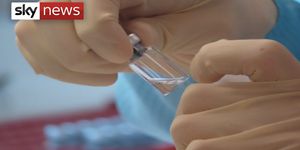How do Microplastics Reach the Deep Seafloor?
Plastics and microplastics are certainly not recent developments in ocean pollution. However, scientists continue to investigate the sources and mechanisms of microplastic pollution throughout the global ocean. Recently, a team of scientists aimed to discover what controls the distribution of microplastics on the deep seafloor. The results of this study were published in Science earlier this month and are summarized in this video.
According to the study, more than 10 million tons of plastic enter the ocean every year. In some regions, this plastic accumulates on or near the ocean surface, and is often referred to as "ocean garbage patches." Surface currents in oceanic gyres control the distribution of these garbage patches, concentrating plastics that do not sink. The study reports that these surface plastic patches account for only about 1% of the plastic pollution present throughout the world's ocean. Where does the rest go?
The remaining plastic pollution ends up in the deep sea, and the study estimates that about 13.5% of this plastic is microplastics. Microplastics and associated harmful toxic substances are ingested by marine organisms and travel up the food chain. The study states that it is crucial to understand where and how microplastics accumulate to determine how they might impact deep sea food chains and ecosystems.
The researchers used sediment samples from various depths and seafloor features of the Tyrrhenian Sea off the coast of Italy, from the shallow continental shelf to depths of 900 meters. They discovered the highest concentration of microplastics ever to be reported on the seafloor—190 pieces per 50 grams (about a spoonful of sediment). As demonstrated in the video, this could mean that one square meter of seafloor might contain about 1.9 million plastic fragments and fibers. This record-breaking sample was taken from an area where deep ocean currents create sloped accumulations of sediment. Closer to shore, where stronger currents may prevent similar accumulations, microplastics occurred in lower concentrations.
The study states that these same thermohaline driven currents also move oxygen and nutrients across the ocean, creating biodiversity hotspots. Scientists are concerned that the microplastic accumulations and biodiversity hotspots will collide, and understanding the resulting impacts through further research is critical.
Additionally, the researchers hope to discover the sources of this microplastic pollution. They may be able to link the source industries to the pollution by examining the microplastics' chemical structure. Knowing the source may help prevent further microplastic pollution and decrease impacts on ocean ecosystems.
Sources: Science Magazine









